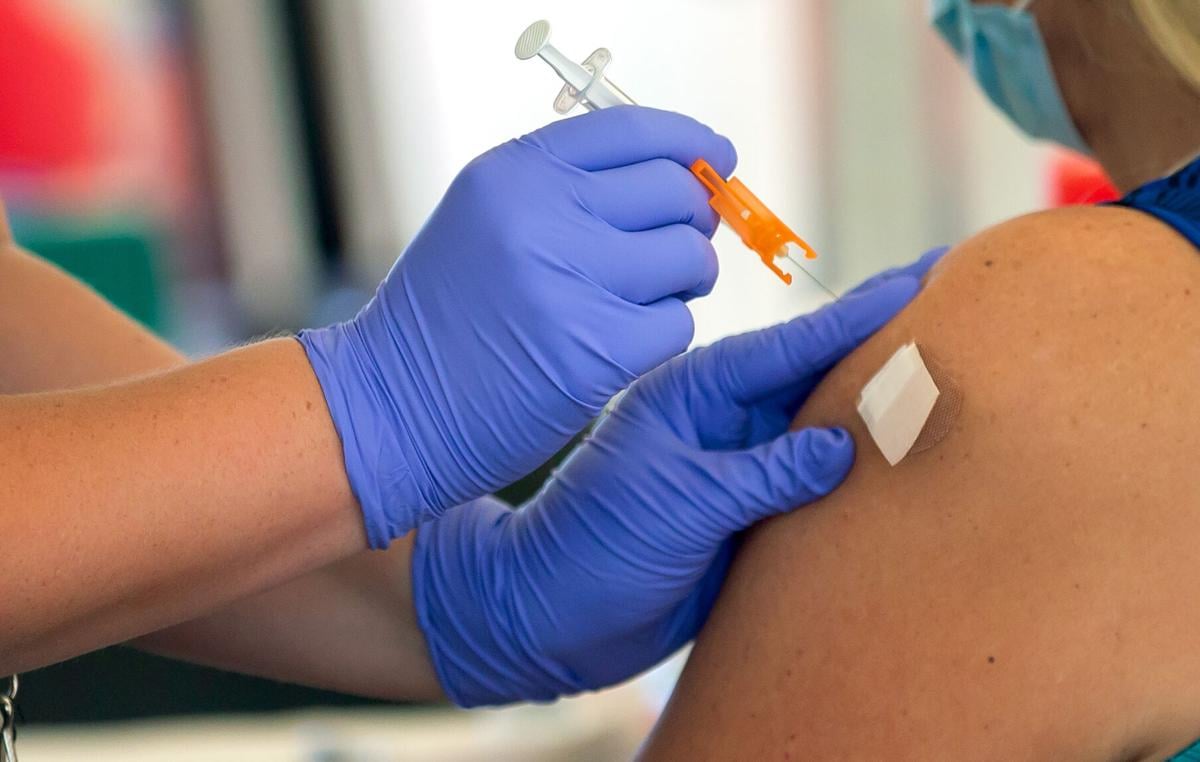Hospitals remain busy as the transmission of three serious viruses remains high across Tucson, but a decline is anticipated soon in an infection that most commonly afflicts children — respiratory syncytial virus, the Pima County Health Department says.
The infection commonly referred to as RSV has started losing its hold in other parts of the country, and Dr. Theresa Cullen — the county’s health director — said Wednesday during a news briefing that the same is hopefully about to start happening here.
“Right now, we are nine times higher than the number of cases we’ve seen in the last five years,” Cullen said of RSV.
However, data from the last seven days shows RSV cases are starting to level off locally, she said.
“We are thinking, hoping, that we may have seen the tip here and we will start seeing a decrease in the number of cases,” she said. “That is what is happening nationally, and we believe our data will follow that.”
COVID-19 continues to be classified as high transmission, with over 200 cases per 100,000 residents being reported in Pima County.
“We’ve seen an ongoing uptick in the percentage of hospital beds that are occupied by patients who have been admitted with COVID,” Cullen said, adding that roughly 10% of the county’s hospital beds are currently occupied by COVID patients.
Influenza numbers also remain high, she said, with the country seeing eight-to-10 times more cases now than is typical for this time of year. The high number of cases has brought on a national shortage of the influenza antiviral medication, Tamiflu.
“The federal government is working with the national strategic stockpile to see whether there can be a release of Tamiflu through the federal distribution center,” Cullen said. If that happens, shipments would come to the county through the state, and the health department would oversee distribution here.
Typically, babies under 6 months old are the most common RSV patients seen in hospitals but this year, admissions include many toddlers and pre-school children, up to age 4, as well as some elderly patients.
Parents should consult a health care provider if a young child has difficulty breathing, isn’t drinking enough fluids, or has worsening cold-like systems including a cough, the state’s Health Department reports.
About 16% of the RSV cases here are among kids ages five to 14 years old while most of the rest are being diagnosed in children aged four and under.
Cullen said to help ease the burden on hospitals, people are urged to gauge how sick they are before seeking care, and only go to emergency rooms for actual emergencies.
“I would remind people that scattered throughout Pima County are multiple other access points for care, including urgent cares,” she said. “They are appropriate to use in cases where you believe it is not an emergency.”
As an example, Cullen said: If you have a cough, a fever and are not short of breath, but your cough has been persistent, that indicates you should see a primary care physician, or seek help at an urgent care.
Cullen said she hopes residents will remember to do what they can to protect themselves such as masking in crowded indoor spaces, washing hands frequently, and avoiding big social gatherings that are being held inside.
Ideally, holiday gatherings should be held outdoors whenever possible. “If these can occur outside, and I realize it’s a little cold right now, that would be best,” she said.
There were 107 deaths from COVID-19 in Arizona over the last week, Arizona Department of Health Services data shows.
Over a six week period in the fall, there were 60 COVID-related deaths in Pima County and 55 of those people were aged 55 and older, with the average age being 80.
“Age is the most important risk factor for significant morbidity and mortality,” Cullen said. About 40% of county residents over age 65 have received the bivalent vaccine for COVID-19, she said.
One way people can help themselves, if they get COVID, is taking the antiviral Paxlovid, if it’s approved for them. Paxlovid is under-utilized here and around the country, she said.
“We’re coming up to 2 years of having vaccine availability for COVID,” she said. “I think what that means is it’s been a long hard road as we enter into 2023.”





